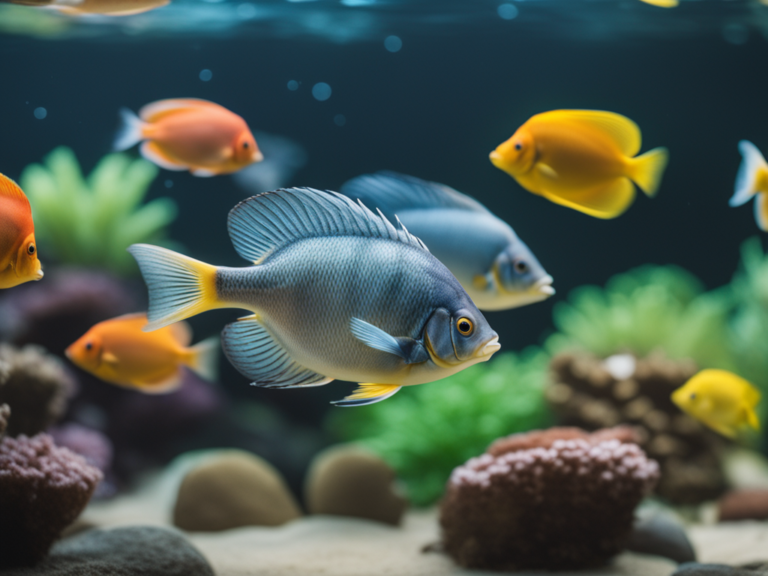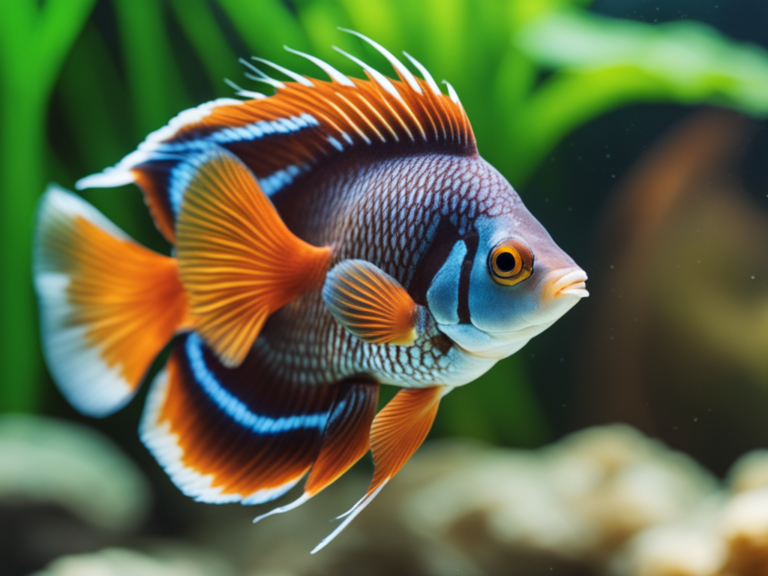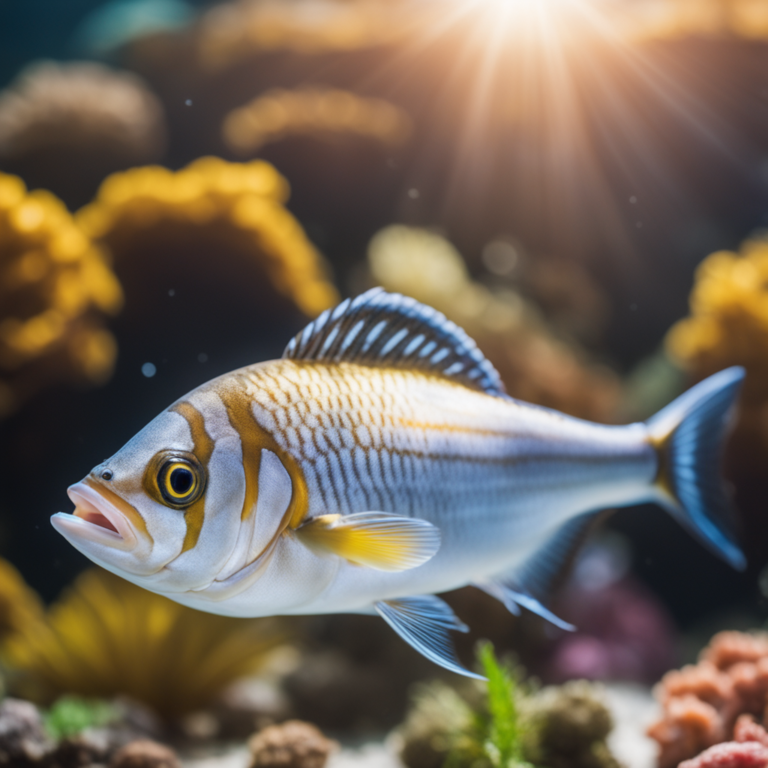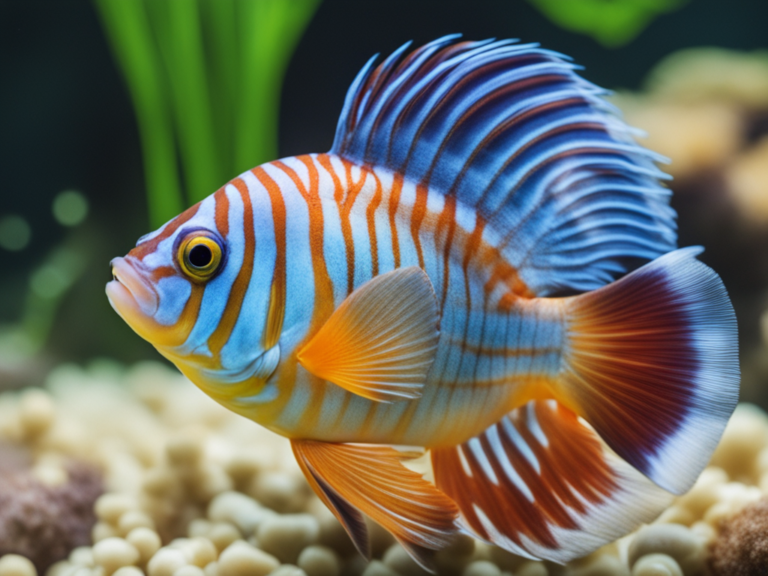8 Amazing Pet Fish Breeds With Long Lifespan
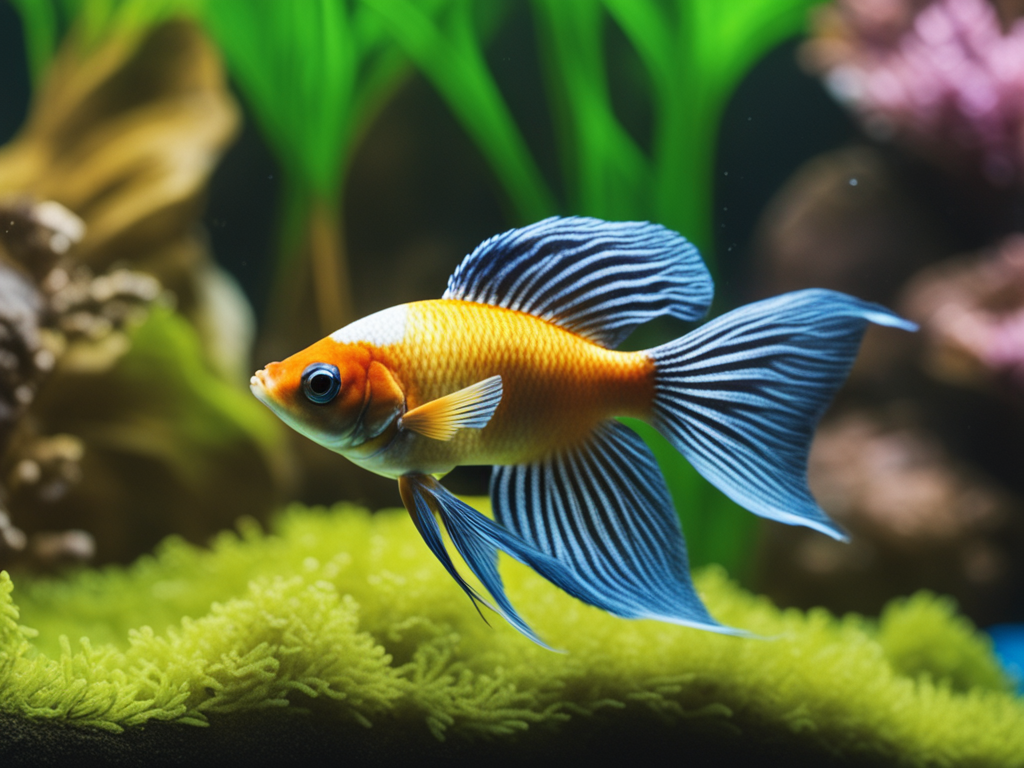
Pet Fish Breeds With Long Lifespan: Did you know that some pet fish breeds can live for a remarkably long time? It’s true! These fascinating underwater companions can bring joy to your life for many years. With an average lifespan of around 2-5 years, Betta Fish are known for their beautiful colors and unique personalities. Goldfish, on the other hand, can live for an impressive 10-20 years when provided with proper care. Gourami fish, known for their vibrant colors and graceful movements, can live for 3-5 years. Killifish, Clownfish, Bristlenose Pleco, Angelfish, and Rainbowfish are also among the breeds that can live for several years, making them wonderful long-term companions for any fish enthusiast.
So, if you’re looking for a pet that can bring you happiness for a significant amount of time, consider these pet fish breeds with long lifespans.
Betta Fish
If you’re looking for a pet fish that can live a long time, consider Betta fish, which are known for their impressive lifespan. Betta fish, scientifically known as Betta splendens, are native to Southeast Asia, specifically Thailand, Cambodia, and Vietnam. These beautiful fish can live up to five years on average, but with proper care and attention, they can live even longer.
When it comes to breeding Betta fish, there are a few techniques that can be employed. The most common method is known as the bubble nest method. Male Betta fish are known to build bubble nests on the water’s surface, which serve as a nursery for their eggs. Breeding tanks should be set up specifically for this purpose, with a temperature of around 80°F and a pH level of 6.5 to 7.0. The tank should also be equipped with plenty of hiding spots for the female Betta, as the male can become aggressive during the mating process.
In terms of tank setup, Betta fish require a minimum tank size of 2.5 gallons, but a larger tank is always preferred. The tank should be equipped with a heater to maintain a consistent temperature, as well as a filter to keep the water clean and oxygenated. Live plants can also be added to the tank, providing hiding spots and creating a natural environment for the fish.
Goldfish
When it comes to long-lived pet fish breeds, another option to consider is the Goldfish. Goldfish have a remarkable longevity compared to other pet fish breeds, and their ability to live for many years has fascinated fish enthusiasts for centuries. There are several factors that contribute to the long lifespan of goldfish, making them a popular choice for pet owners who seek a companion that will be with them for a significant portion of their lives.
Here are two sub-lists that delve deeper into the topic:
Factors that contribute to the long lifespan of goldfish:
- Genetics: Goldfish have been selectively bred over centuries, resulting in robust genetics that enable them to live longer. Through careful breeding, breeders have developed goldfish strains that exhibit enhanced health and longevity.
- Environmental conditions: The lifespan of goldfish can be significantly influenced by the conditions in which they are kept. Providing a suitable environment with proper filtration, oxygenation, and regular water changes is crucial for their well-being and longevity. Goldfish thrive in spacious aquariums or ponds with ample swimming space and a well-balanced ecosystem.
Longevity of goldfish compared to other pet fish breeds:
- Average lifespan: Goldfish have an average lifespan of 10 to 15 years, although some individuals can live for several decades under optimal conditions. This is considerably longer than many other pet fish breeds, such as Betta fish, which typically live for 2 to 4 years.
- Size and growth rate: Goldfish grow relatively slowly compared to other fish breeds, and their slow growth rate is believed to contribute to their extended lifespan. Slower growth allows their organs to develop properly, which enhances their overall health and longevity.
Gourami
To maximize the lifespan of your pet fish, consider the Gourami breed. Gouramis are a popular choice among fish enthusiasts due to their vibrant colors, peaceful nature, and relatively long lifespan. These fish can live up to 5 years or even longer if provided with proper care and the right tank conditions.
When it comes to tank mates for Gouramis, it is important to choose companions that are compatible with their peaceful demeanor. Avoid aggressive or fin-nipping species, as they can cause stress and potential harm to the Gouramis. Good tank mates for Gouramis include peaceful community fish such as tetras, rasboras, and Corydoras catfish. It is important to research the specific requirements of each species to ensure a harmonious coexistence within the aquarium.
Breeding Gouramis can be a rewarding experience for fish keepers. To successfully breed Gouramis, it is essential to provide them with the right conditions. A separate breeding tank with dense vegetation, such as floating plants or java moss, is recommended. The water temperature should be around 78-82°F (25-28°C), and the pH level should be slightly acidic to neutral.
During the breeding process, the male Gourami will build a bubble nest at the water’s surface where the eggs will be placed. After the female lays the eggs, the male will fertilize them and guard the nest until the fry hatch. It is important to remove the female from the breeding tank after spawning to prevent her from eating the eggs.
Killifish
For even more options of pet fish breeds with long lifespans, consider adding Killifish to your aquarium. Killifish, scientifically known as Cyprinodontiformes, are a diverse group of fish species that are known for their vibrant colors and unique breeding behaviors. To ensure that your Killifish displays the most vibrant colors, it is important to understand the breeding techniques that can be used to enhance their genetic traits. Here are some techniques to consider:
- Selective Breeding:
- Choose parent fish with the desired color traits and breed them together to increase the likelihood of producing offspring with those colors.
- Separate the eggs from the parents and provide the necessary conditions for their development, such as the appropriate temperature and water quality.
- Crossbreeding:
- Introduce different species or varieties of Killifish to create hybrid offspring with unique colors and patterns.
- Crossbreeding can lead to a wider range of color variations and increase the chances of obtaining the desired vibrant colors.
Creating the perfect habitat for happy and healthy Killifish is essential to their overall well-being. Consider the following factors:
- Water Parameters:
- Maintain stable water parameters, including temperature, pH, and hardness, to mimic the natural conditions of their native habitats.
- Regularly monitor water quality and perform partial water changes to keep the environment clean and free from toxins.
- Tank Setup:
- Provide plenty of hiding places, such as rocks, caves, and plants, to create a sense of security for the Killifish.
- Use a fine substrate, like sand or gravel, to mimic their natural habitat and allow them to exhibit their natural behaviors.
Clownfish
To learn more about Clownfish and their long lifespan, let’s dive into their fascinating characteristics and unique care requirements. Clownfish, also known as anemonefish, are small, brightly colored fish that belong to the subfamily Amphiprioninae. These fish are most famous for their symbiotic relationship with sea anemones, where they find protection and shelter.
One interesting fact about clownfish behavior is their unique social structure. Clownfish live in small groups, known as harems, which consist of a dominant female, a breeding male, and several non-breeding males. The dominant female is the largest and most aggressive fish in the group, while the breeding male is the next largest. The non-breeding males are smaller and help protect the harem and care for the eggs.
When it comes to breeding and care, clownfish have specific requirements. Breeding clownfish can be a challenging task, as they are known to be picky about their mates and breeding partners. It is important to select healthy and compatible pairs for successful breeding. Once a pair is established, a suitable anemone must be provided as their habitat. Clownfish lay their eggs on a flat surface close to the anemone, where they are guarded and cared for by the male. It is crucial to maintain stable water conditions, provide a varied diet, and minimize stress to ensure the well-being of the breeding pair and their offspring.
Bristlenose Pleco
Caring for Bristlenose Pleco involves providing the right environment and diet to ensure their longevity. These unique fish, scientifically known as Ancistrus cirrhosus, are a popular choice among aquarium enthusiasts due to their interesting appearance and ability to help keep the tank clean. Here are some important factors to consider when caring for a Bristlenose Pleco:
- Tank requirements:
- Bristlenose Plecos are native to the rivers of South America and require a tank that mimics their natural habitat. A tank size of at least 20 gallons is recommended to provide ample space for these fish to thrive.
- It is important to provide plenty of hiding spots in the form of caves, driftwood, and plants. Bristlenose Plecos are nocturnal and enjoy hiding in these structures during the day.
- Ensure the tank has a strong filtration system to maintain clean water quality. Bristlenose Plecos produces a significant amount of waste, and a good filtration system will help keep the tank environment healthy.
- Breeding habits:
- Bristlenose Plecos are relatively easy to breed in captivity. However, it is essential to provide the right conditions to encourage breeding behavior.
- Maintain a stable water temperature between 72°F and 82°F (22°C and 28°C). A slight temperature drop during the breeding season can trigger spawning.
- Provide suitable breeding caves, such as PVC pipes or clay pots, where the female can lay her eggs. The male will then fertilize them and guard the nest until the eggs hatch.
Angelfish
If you’re considering adding an angelfish to your aquarium, it’s important to understand their specific care requirements for ensuring a long and healthy lifespan. Angelfish, scientifically known as Pterophyllum, are a popular choice among fish enthusiasts due to their unique shape and vibrant colors. These long-living creatures can live up to 10 years if provided with the right care. To ensure the well-being of your angelfish, there are several key care tips to consider.
First and foremost, maintaining a suitable tank environment is crucial. Angelfish prefer tall tanks with plenty of vertical swimming space due to their long, flowing fins. A tank size of at least 20 gallons is recommended for a single angelfish, with additional space needed if you plan on housing more than one. It’s also important to keep the water temperature between 78 and 84 degrees Fahrenheit and maintain a pH level between 6.5 and 7.0.
In terms of diet, angelfish are omnivorous and require a balanced diet. A combination of high-quality flakes, pellets, and live or frozen foods such as brine shrimp or bloodworms should be provided. It’s essential to avoid overfeeding, as angelfish are prone to obesity. Feeding them small portions multiple times a day is recommended.
When it comes to breeding angelfish, it’s crucial to create the right conditions. A separate breeding tank should be set up with a flat surface for the pair to lay their eggs on. The water temperature should be slightly higher, around 82 degrees Fahrenheit, to encourage spawning. Providing suitable hiding places and plants in the tank is also essential to mimic their natural habitat.
While angelfish are relatively hardy, they can still be susceptible to certain health issues. Common problems include fin rot, ich, and swim bladder disorders. Regular water testing, maintaining proper water conditions, and providing a balanced diet can help prevent these issues.
Rainbowfish
Rainbowfish, known for their vibrant colors and active nature, are another pet fish breed with a long lifespan. If you are considering keeping rainbowfish as pets, it is important to understand their breeding habits and requirements, as well as their compatibility with other fish species. Here are some key points to consider:
- Breeding habits and requirements of rainbowfish:
- Rainbowfish are egg-layers, with males courting females through elaborate displays of colors and fin flaring.
- To encourage breeding, it is crucial to maintain a well-balanced aquarium environment with suitable water parameters, including temperature, pH, and hardness.
- Providing plants, rocks, and other hiding spots will create a conducive environment for rainbowfish to spawn and protect their eggs.
- Compatibility with other fish species:
- Rainbowfish are generally peaceful and can coexist with a wide range of community fish, such as tetras, gouramis, and corydoras catfish.
- However, it is important to consider the size and temperament of the other fish species when choosing tank mates for rainbowfish.
- Avoid pairing them with aggressive or fin-nipping fish, as rainbowfish have delicate fins that can be easily damaged.
When it comes to the health of rainbowfish, there are a few common diseases and health issues to be aware of:
- Common diseases and health issues in rainbowfish and how to prevent them:
- Ich, or white spot disease, is a common ailment that affects rainbowfish. To prevent it, maintain good water quality and avoid introducing infected fish into the aquarium.
- Swim bladder disorders can occur in rainbowfish, causing buoyancy issues. Feeding a varied diet and avoiding overfeeding can help prevent this condition.
- Regularly monitoring water parameters, performing regular water changes, and quarantining new fish before introducing them to the main tank can greatly reduce the risk of disease.
Pet Fish Breeds With Long Lifespan Frequently Asked Questions
What Are the Most Important Factors to Consider for Maintaining a Healthy and Long Lifespan for Pet Fish?
To maintain a healthy and long lifespan for your pet fish, it is crucial to consider the importance of proper feeding and nutrition. Additionally, the role of water quality cannot be overstated in promoting fish longevity.
Are There Any Specific Care Requirements or Environmental Conditions That Can Help Extend the Lifespan of These Fish Breeds?
To extend the lifespan of pet fish breeds, you must understand their care requirements and provide suitable environmental conditions. Proper nutrition, clean water, appropriate tank size, and regular maintenance are all crucial for ensuring the longevity of these fish.
Can You Provide Some Tips for Choosing a Healthy Fish From a Pet Store or Breeder to Ensure a Longer Lifespan?
To ensure a longer lifespan for your pet fish, here are some tips for choosing a healthy fish: examine their overall appearance, look for clear eyes and vibrant colors, observe their behavior and swimming patterns, and ask the pet store or breeder about their breeding practices.
Are There Any Common Health Issues or Diseases That These Fish Breeds Are Prone To, and How Can Owners Prevent or Treat Them?
Common health issues in pet fish breeds can include swim bladder disease, fin rot, and ich. To prevent these, maintain clean water conditions, provide a balanced diet, and quarantine new fish. Treatment options may include medication, water changes, and proper nutrition.
What Are Some Common Mistakes That Fish Owners Make That Can Negatively Impact the Lifespan of These Breeds, and How Can They Be Avoided?
Common mistakes in fish care can negatively impact the lifespan of these breeds. To avoid this, choose a healthy fish by observing its behavior, appearance, and tank conditions. Maintain proper water quality, provide an appropriate diet, and avoid overcrowding to ensure a long and healthy life for your pet fish.
Conclusion
In conclusion, when looking for a pet fish breed with a long lifespan, consider Betta Fish, Goldfish, Gourami, Killifish, Clownfish, Bristlenose Pleco, Angelfish, and Rainbowfish. These species have been known to live longer than others, thanks to their unique biological and environmental adaptations. By providing proper care, nutrition, and suitable habitat, fish enthusiasts can ensure the longevity and well-being of these fascinating aquatic creatures. Choose wisely and enjoy the companionship of your pet fish for many years to come.





